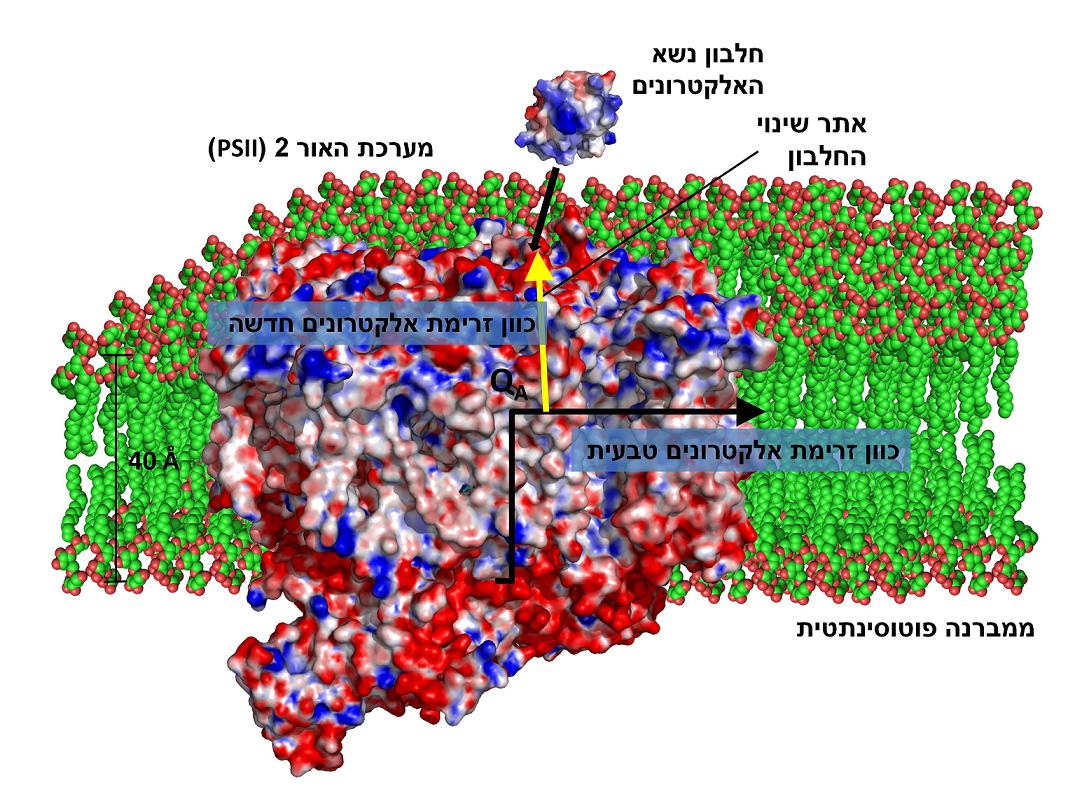Technion researchers achieved a breakthrough in the creation of biological energy * made a change in a natural photosynthetic system; The Technion registered a patent for it and the scientific article was recommended as a "mandatory article" by a global organization of biology experts

Interdisciplinary cooperation at the Technion yielded the possibility of a breakthrough in the field of bioenergy. The Technion registered a patent for this and the Technion researchers' scientific article was recommended as a "must read" by the well-known organization of senior biology researchers - Faculty of 1000/Biology, who stated that "there is something new under the sun" and that the achievement is the first step in creating truly green energy, Or in their language - "The greenest of green". The article was published in the prestigious PNAS journal of the US National Academy of Sciences - Proceeding of National Academic of Science.
The researchers - Dean of the Biology Faculty, Professor Gadi Shuster and Professor Noam Adir from the Shulich Faculty of Chemistry, with doctoral students Shirley Larom and Fars Salama - made an important achievement on the road to green energy. They were able to manipulate the process of photosynthesis (the process by which plants absorb the sun's energy and produce effective chemical energy from it) in a way that may be used to produce electricity from plants. Technion researchers studied a key protein in the process of transporting electrons in the photosynthetic production line. In its natural state, the protein removes electrons from water and transfers them within membranes in bacteria and plants. In nature, the membrane isolates the biological electrical current from splicing into side processes. The researchers changed one amino acid out of the hundreds found in the protein, from a positive amino acid to a negative one and thus managed to change the direction of the electron emission to one that allows harnessing the energy produced in the process and using it afterwards.
The engineered protein also "exports" electrons at a high enough frequency to produce a useful amount of energy, and directs the current in a configuration that allows efficient absorption of this energy. This - without the artificial change harming the function of the protein. This makes it possible to grow the organism in a completely natural way, which makes it possible to obtain large quantities of the protein at a very low price and without polluting industrial processes.
In the second step, the Technion researchers looked for an electron carrier protein that would receive the emitted electrons and transfer them to the electrode of an electric cell. They found that a small protein called "cytochrome C" extracted from the hearts of horses is the most suitable and fulfills the role well.
In the future, the researchers hope to engineer an actual mechanism that will be able to translate the biochemical energy into electricity and hydrogen familiar to us from everyday life. "It won't replace a power plant," they say, "but it can provide a useful amount of completely clean electricity, especially in places with infrastructure problems that electricity doesn't reach.
We hope to reach a situation where a few individual leaves, for example - tobacco leaves, will be able to provide electricity for several hours, just like a photovoltaic panel of one square meter", emphasize professors Adair and Shuster.

11 תגובות
Guide to generating natural electricity:
Ingredients-
1.
2-3 fresh horse hearts
2. Tobacco plant
3. Socket..
XD
Can I have a link to the article please?
All smokers will have to be careful not to get an electric shock
It is not clear why the phase of the electron acceptor protein cytochrome c extracted from horses is needed?
Is it not possible to absorb the electric charge directly by an electrode of an electric cell?
Is there a link to the article in English?
For me (in Chrome) clicking on the image does not work.
What does work is clicking on the image with the right mouse and in the menu that opens - selecting the option "Open image in a new tab"
Yoav click on the image to see a larger version.
Amazing! Is there any chance of a link to another news item, or to enlarge the image on the site?
It can be said that a new era is beginning from the electronic to bioelectronic component
Well done! Proud of you for the amazing achievement and love S.S.K
Well done!
Maybe the beginning of a return to nature.